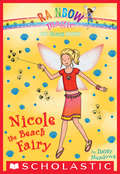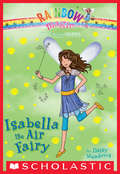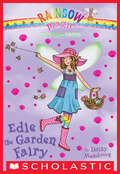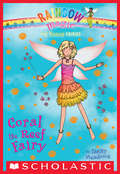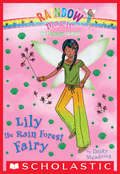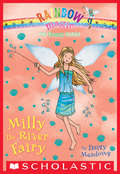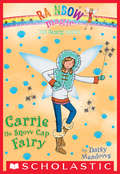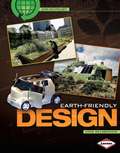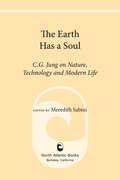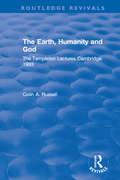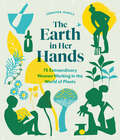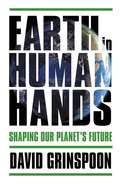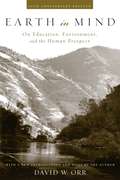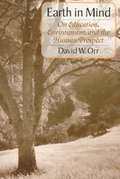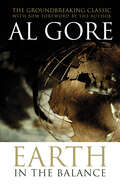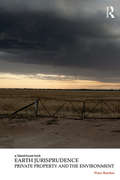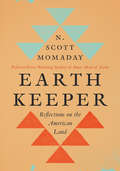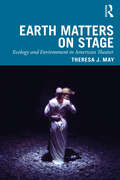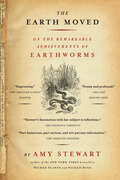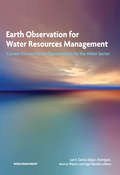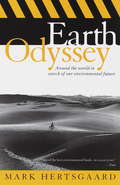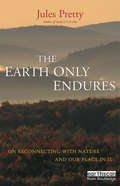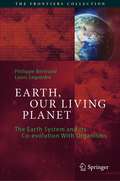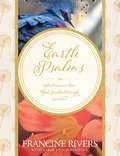- Table View
- List View
The Earth Fairies #1: Nicole the Beach Fairy (The Earth Fairies #1)
by Daisy MeadowsThe fairies are going green!<P> The fairy king and queen have just put together a new team of seven fairies for a very special mission. They are the Earth Fairies! Together, they're going to work their magic to clean up the environment. But they can't do it alone. Luckily, Rachel and Kirsty are ready to help!<P> The beach on Rainspell Island is covered with garbage, and it's putting the sea creatures in danger. But Nicole the Beach Fairy can't do much without her missing magic wand. Can the girls help her track it down?<P> Find the missing magic wand in each book and help save the environment!
The Earth Fairies #2: Isabella the Air Fairy (The Earth Fairies #2)
by Daisy MeadowsThe fairies are going green!<P> The fairy king and queen have just put together a new team of seven fairies for a very special mission. They are the Earth Fairies! Together, they're going to work their magic to clean up the environment. But they can't do it alone. Luckily, Rachel and Kirsty are ready to help!<P> The air on Rainspell Island is thick with smog. Isabella the Air Fairy wants to return the island's fresh ocean breezes and sparkling blue skies. But she can't do anything without her wand!<P> Find the missing magic wand in each book and help save the environment!
The Earth Fairies #3: Edie the Garden Fairy (The Earth Fairies #3)
by Daisy MeadowsThe fairies are going green!<P> The fairy king and queen have just put together a new team of seven fairies for a very special mission. They are the Earth Fairies! Together, they're going to work their magic to clean up the environment. But they can't do it alone. Luckily, Rachel and Kirsty are ready to help!<P> Rachel and Kirsty are volunteering for a gardening project. They're going to turn an unused lot into a beautiful garden. But first they need to find Edie's missing wand-before it's too late!<P> Find the missing magic wand in each book and help save the environment!
The Earth Fairies #4: Coral the Reef Fairy (The Earth Fairies #4)
by Daisy MeadowsThe fairies are going green!<P> The fairy king and queen have just put together a new team of seven fairies for a very special mission. They are the Earth Fairies! Together, they're going to work their magic to clean up the environment. But they can't do it alone. Luckily, Rachel and Kirsty are ready to help!<P> Coral the Reef Fairy's magic keeps the reef environment healthy. But Jack Frost's goblins have her wand and underwater environments everywhere are in trouble. Can Rachel and Kirsty find the wand and put an end to Jack Frost's plans? <P> Find the missing magic wand in each book and help save the environment!
The Earth Fairies #5: Lily the Rain Forest Fairy (The Earth Fairies #5)
by Daisy MeadowsThe fairies are going green!<P> The fairy king and queen have just put together a new team of seven fairies for a very special mission. They are the Earth Fairies! Together, they're going to work their magic to clean up the environment. But they can't do it alone. Luckily, Rachel and Kirsty are ready to help!<P> Lily the Rainforest Fairy whisks the girls away to a tropical forest to find her wand. Lily needs her wand to save the rainforest-and to get Rachel and Kirsty home safe again.<P> Find the missing magic wand in each book and help save the environment!
The Earth Fairies #6: Milly the River Fairy (The Earth Fairies #6)
by Daisy MeadowsThe fairies are going green!<P> The fairy king and queen have just put together a new team of seven fairies for a very special mission. They are the Earth Fairies! Together, they're going to work their magic to clean up the environment. But they can't do it alone. Luckily, Rachel and Kirsty are ready to help!<P> Rachel and Kirsty are helping Milly the River Fairy clean up a polluted river. But troublemaking goblins keep getting in the way. The girls need to get Milly's wand back to make the river a safe place again.<P> Find the missing magic wand in each book and help save the environment!
The Earth Fairies #7: Carrie the Snow Cap Fairy (The Earth Fairies #7)
by Daisy MeadowsThe fairies are going green!<P> The fairy king and queen have just put together a new team of seven fairies for a very special mission. They are the Earth Fairies! Together, they're going to work their magic to clean up the environment. But they can't do it alone. Luckily, Rachel and Kirsty are ready to help!<P> Rainspell Island's weather is wacky-and it's all because Carrie the Snow Cap Fairy's magic wand is missing. Her magic helps keep the earth's climate under control. Rachel and Kirsty are determined to outsmart Jack Frost and keep the earth clean and green! <P> Find the missing magic wand in each book and help save the environment!
Earth-Friendly Design (Saving Our Living Earth)
by Anne WelsbacherDesigners create all products, from computers and cell phones to cars and buildings, to meet the needs and desires of buyers. But did you realize that each stage in the life of a manufactured product involves processes that can damage Earth's land, air, water, and the health of living things? Earth-friendly design can help us make our planet healthier. We must join together in this quest to make, move, use, reuse, and dispose of things in Earth-friendly ways. With engaging text and eye-catching images, plus a special Going Green section, this book tells you all about Earth-friendly design and what you can do to promote it.
The Earth Has a Soul: C. G. Jung on Nature, Technology and Modern Life
by C. G. Jung Meredith SabiniWhile never losing sight of the rational, cultured mind, Jung speaks for the natural mind, source of the evolutionary experience and accumulated wisdom of our species. Through his own example, Jung shows how healing our own living connection with Nature contributes to the whole.
Earth Hour: A Lights-Out Event for Our Planet
by Nanette HeffernanClick flashlights, light lanterns, and get ready to turn electric lights out to celebrate Earth Hour! Wherever you are, you can help our planet.Kids around the world use electric energy to do all kinds of things--adults do, too! From cleaning the clothes we play in, to lighting up our dinner tables, to keeping us warm and toasty when the weather is cold, electricity is a huge part of our lives. Unfortunately, it can also have a big impact on our planet.Earth Hour--a worldwide movement in support of energy conservation and sustainability--takes place each March and is sponsored by the World Wildlife Fund for Nature (WWF). During Earth Hour, individuals, communities, and businesses in more than 7,000 cities turn off nonessential electric lights for one hour. Across each continent--from the Eiffel Tower to the Great Wall of China to the Statue of Liberty--one small act reminds all of us of our enormous impact on planet Earth.
The Earth, Humanity and God: The Templeton Lectures Cambridge, 1993 (Routledge Revivals)
by Colin A. RussellOriginally published in 1994, The Earth, Humanity and God discusses the relationship between science and religion. The book discusses the condition of the earth (as it was at the time of publication) and the future prospects of the planet, arguing that neither the conventional "mechanistic" view nor "New Age" philosophy helps alone in evaluating our relationship with the Earth. The book examines methods of combatting the threats to the Earth exploring both a scientific and non-scientific stance, investigating the uncontrolled expansion of technology as well as empirical pre-scientific mysticism. The book also explores the resurgence in ancient ideas of "Mother Earth" as a dangerous piece of romantic irrationality and suggests, that these views pose a danger to religious/scientific examinations. The book suggests instead a hard-headed attempt to relate Biblical and scientific data, and that this in turn can yield a valuable new understanding of the problems facing the world.
The Earth in Her Hands: 75 Extraordinary Women Working in the World of Plants
by Jennifer Jewell&“An informative and celebratory resource.&” —Booklist In this beautiful and empowering book, Jennifer Jewell—host of public radio&’s award-winning program and podcast Cultivating Place—introduces 75 inspiring women. Working in wide-reaching fields that include botany, floral design, landscape architecture, farming, herbalism, and food justice, these influencers are creating change from the ground up. Profiled women include flower farmer Erin Benzakein; codirector of Soul Fire Farm Leah Penniman; plantswoman Flora Grubb; edible and cultural landscape designer Leslie Bennett; Caribbean-American writer and gardener Jamaica Kincaid; soil scientist Elaine Ingham; landscape designer Ariella Chezar; floral designer Amy Merrick, and many more. Rich with personal stories and insights, Jewell&’s portraits reveal a devotion that transcends age, locale, and background, reminding us of the profound role of green growing things in our world—and our lives.
Earth in Human Hands: Shaping Our Planet's Future
by David GrinspoonFor the first time in Earth's history, our planet is experiencing a confluence of rapidly accelerating changes prompted by one species: humans. Climate change is only the most visible of the modifications we've made--up until this point, inadvertently--to the planet. And our current behavior threatens not only our own future but that of countless other creatures. By comparing Earth's story to those of other planets, astrobiologist David Grinspoon shows what a strange and novel development it is for a species to evolve to build machines, and ultimately, global societies with world-shaping influence. Without minimizing the challenges of the next century, Grinspoon suggests that our present moment is not only one of peril, but also great potential, especially when viewed from a 10,000-year perspective. Our species has surmounted the threat of extinction before, thanks to our innate ingenuity and ability to adapt, and there's every reason to believe we can do so again. Our challenge now is to awaken to our role as a force of planetary change, and to grow into this task. We must become graceful planetary engineers, conscious shapers of our environment and caretakers of Earth's biosphere. This is a perspective that begs us to ask not just what future do we want to avoid, but what do we seek to build? What kind of world do we want? Are humans the worst thing or the best thing to ever happen to our planet? Today we stand at a pivotal juncture, and the answer will depend on the choices we make.
Earth in Mind: On Education, Environment, and the Human Prospect
by David W. OrrIn Earth in Mind, noted environmental educator David W. Orr focuses not on problems in education, but on the problem of education.Much of what has gone wrong with the world, he argues, is the result of inadequate and misdirected education that: alienates us from life in the name of human domination; causes students to worry about how to make a living before they know who they are; overemphasizes success and careers; separates feeling from intellect and the practical from the theoretical; deadens the sense of wonder for the created world.The crisis we face, Orr explains, is one of mind, perception, and values. It is, first and foremost, an educational challenge.The author begins by establishing the grounds for a debate about education and knowledge. He describes the problems of education from an ecological perspective, and challenges the "terrible simplifiers" who wish to substitute numbers for values. He follows with a presentation of principles for re-creating education in the broadest way possible, discussing topics such as biophilia, the disciplinary structure of knowledge, the architecture of educational buildings, and the idea of ecological intelligence. Orr concludes by presenting concrete proposals for reorganizing the curriculum to draw out our affinity for life.
Earth in Mind: On Education, Environment, and the Human Prospect
by David W. OrrOrr (environmental studies and politics, Oberlin College) presents the tenth anniversary edition of his text addressing educational reform from an environmental perspective. In a collection of 23 essays, written for various purposes and audiences between 1990 and 1993, Orr argues that, where educational debates about standards and reforms have centered around preparing students to compete in a global economy, an equally important concern should be teaching students the ecological context in which humans live, to develop in them an ethical view of the world and their obligations to it. The tenth edition includes a brief new introduction and a new final chapter offering "hope in hard times. " Annotation ©2004 Book News, Inc. , Portland, OR (booknews. com)
Earth in the Balance: Forging a New Common Purpose (Plume Ser.)
by Al GoreAl Gore leads the charge against climate change, the world's greatest threat, in an incendiary new foreword to this timeless classic that launched his environmental career. If you want to know Gore, you need this book!
Earth Jurisprudence: Private Property and the Environment (Law, Justice and Ecology)
by Peter D. BurdonThe idea of human dominion over nature has become entrenched by the dominant rights-based interpretation of private property. Accordingly, nature is not attributed any inherent value and becomes merely the matter of a human property relationship. Earth Jurisprudence: Private Property and the Environment explores how an alternative conception of property might be instead grounded in the ecocentric concept of an Earth community. Recognising that human beings are deeply interconnected with and dependent on nature, this concept is proposed as a standard and measure for human law. This book argues that the anthropocentric institution of private property needs to be reconceived; drawing on international case law, indigenous views of property and the land use practices of agrarian communities, Peter Burdon considers how private property can be reformulated in a way that fosters duties towards nature. Using the theory of earth jurisprudence as a guide, he outlines an alternative ecocentric description of private property as a relationship between and among members of the Earth community. This book will appeal to those researching in law, justice and ecology, as well as anyone pursuing an interest more particularly in earth jurisprudence.
Earth Keeper: Reflections on the American Land (Native Keepers)
by N. Scott MomadayA beautifully written and poignant tribute to the Earth, from Pulitzer Prize-winning novelist and poet N. Scott Momaday. <p><p> One of the most distinguished voices in American letters, N. Scott Momaday has devoted much of his life to celebrating and preserving Native American culture, especially its oral tradition. A member of the Kiowa tribe who was born and grew up on Indian reservations throughout the Southwest, Momaday has an intimate connection to the land he knows well and loves deeply. <p> In Earth Keeper: Reflections on the American Land, he reflects on his native ground and its influence on his people. “When I think about my life and the lives of my ancestors, I am inevitably led to the conviction that I, and they, belong to the American land. This is a declaration of belonging. And it is an offering to the earth.” he writes. <p> Momaday recalls stories of his childhood, stories that have been passed down through generations, stories that reveal a profound and sacred connection to the American landscape and a reverence for the natural world. <p> In this moving and lyrical work, he offers an homage and a warning. Momaday reminds us that the Earth is a sacred place of wonder and beauty; a source of strength and healing that must be protected before it’s too late. As he so eloquently yet simply expresses, we must all be keepers of the Earth.
Earth Matters on Stage: Ecology and Environment in American Theater (Routledge Studies in Theatre, Ecology, and Performance)
by Theresa J. MayEarth Matters on Stage: Ecology and Environment in American Theater tells the story of how American theater has shaped popular understandings of the environment throughout the twentieth century as it argues for theater’s potential power in the age of climate change. Using cultural and environmental history, seven chapters interrogate key moments in American theater and American environmentalism over the course of the twentieth century in the United States. It focuses, in particular, on how drama has represented environmental injustice and how inequality has become part of the American environmental landscape. As the first book-length ecocritical study of American theater, Earth Matters examines both familiar dramas and lesser-known grassroots plays in an effort to show that theater can be a powerful force for social change from frontier drama of the late nineteenth century to the eco-theater movement. This book argues that theater has always and already been part of the history of environmental ideas and action in the United States. Earth Matters also maps the rise of an ecocritical thought and eco-theater practice – what the author calls ecodramaturgy – showing how theater has informed environmental perceptions and policies. Through key plays and productions, it identifies strategies for artists who want their work to contribute to cultural transformation in the face of climate change.
The Earth Moved: On the Remarkable Achievements of Earthworms
by Amy StewartIn The Earth Moved, Amy Stewart takes us on a journey through the underground world and introduces us to one of its most amazing denizens. The earthworm may be small, spineless, and blind, but its impact on the ecosystem is profound. It ploughs the soil, fights plant diseases, cleans up pollution, and turns ordinary dirt into fertile land. Who knew? <P><P>In her witty, offbeat style, Stewart shows that much depends on the actions of the lowly worm. Charles Darwin devoted his last years to the meticulous study of these creatures, praising their remarkable abilities. With the august scientist as her inspiration, Stewart investigates the worm's subterranean realm, talks to oligochaetologists—the unsung heroes of earthworm science—who have devoted their lives to unearthing the complex life beneath our feet, and observes the thousands of worms in her own garden. <P> From the legendary giant Australian worm that stretches to ten feet in length to the modest nightcrawler that wormed its way into the heart of Darwin's last book to the energetic red wigglers in Stewart's compost bin, The Earth Moved gives worms their due and exposes their hidden and extraordinary universe. This book is for all of us who appreciate Mother Nature's creatures, no matter how humble.
Earth Observation for Water Resources Management: Current Use and Future Opportunities for the Water Sector
by Luis Garcãa Pakulski Marcus Wijnen Diego RodrãguezWater systems are building blocks for poverty alleviation, shared growth, sustainable development, and green growth strategies. They require data from in-situ observation networks. Budgetary and other constraints have taken a toll on their operation and there are many regions in the world where the data are scarce or unreliable. Increasingly, remote sensing satellite-based earth observation is becoming an alternative. This book briefly describes some key global water challenges, perspectives for remote sensing approaches, and their importance for water resources-related activities. It describes eight key types of water resources management variables, a list of sensors that can produce such information, and a description of existing data products with examples. Earth Observation for Water Resources Management provides a series of practical guidelines that can be used by project leaders to decide whether remote sensing may be useful for the problem at hand and suitable data sources to consider if so. The book concludes with a review of the literature on reliability statistics of remote-sensed estimations.
Earth Odyssey: Around the World in Search of Our Environmental Future
by Mark HertsgaardLike many of us, Mark Hertsgaard has long worried about the declining health of our environment. But in 1991, he decided to act on his own concern and investigate the escalating crisis for himself. Traveling on his own dime, he embarked on an odyssey lasting most of the decade and spanning nineteen countries. Now, inEarth Odysseyhe reports on our environmental predicament through the eyes of the people who live it. Earth Odysseyis a vivid, passionate narrative about one man's journey around the world in search of the answer to the essential question of our time: Is the future of the human species at risk? Combining first-rate reportage with irresistible storytelling, Mark Hertsgaard has written an essential--and ultimately hopeful--book about the uncertain fate of humankind.
The Earth Only Endures: On Reconnecting with Nature and Our Place in It
by Jules PrettyFor most of human history, we have lived our daily lives in a close relationship with the land. Yet now, for the first time, more people are living in urban rather than rural areas, bringing about an estrangement. This book, by acclaimed author Jules Pretty, is fundamentally about our relationship with nature, animals and places. A series of interlinked essays leads readers on a voyage that weaves through the themes of connection and estrangement between humans and nature. The journey shows how our modern lifestyles and economies would need six or eight Earths if the entire world?s population adopted our profligate ways. Pretty shows that we are rendering our own world inhospitable and so risk losing what it means to be human: unless we make substantial changes, Gaia threatens to become Grendel. Ultimately, however, the book offers glimpses of an optimistic future for humanity, in the very face of climate change and pending global environmental catastrophe.
Earth, Our Living Planet: The Earth System and its Co-evolution With Organisms (The Frontiers Collection)
by Philippe Bertrand Louis LegendreEarth is, to our knowledge, the only life-bearing body in the Solar System. This extraordinary characteristic dates back almost 4 billion years. How to explain that Earth is teeming with organisms and that this has lasted for so long? What makes Earth different from its sister planets Mars and Venus? The habitability of a planet is its capacity to allow the emergence of organisms. What astronomical and geological conditions concurred to make Earth habitable 4 billion years ago, and how has it remained habitable since? What have been the respective roles of non-biological and biological characteristics in maintaining the habitability of Earth? This unique book answers the above questions by considering the roles of organisms and ecosystems in the Earth System, which is made of the non-living and living components of the planet. Organisms have progressively occupied all the habitats of the planet, diversifying into countless life forms and developing enormous biomasses over the past 3.6 billion years. In this way, organisms and ecosystems "took over" the Earth System, and thus became major agents in its regulation and global evolution. There was co-evolution of the different components of the Earth System, leading to a number of feedback mechanisms that regulated long-term Earth conditions. For millennia, and especially since the Industrial Revolution nearly 300 years ago, humans have gradually transformed the Earth System. Technological developments combined with the large increase in human population have led, in recent decades, to major changes in the Earth's climate, soils, biodiversity and quality of air and water. After some successes in the 20th century at preventing internationally environmental disasters, human societies are now facing major challenges arising from climate change. Some of these challenges are short-term and others concern the thousand-year evolution of the Earth's climate. Humans should become the stewards of Earth.
Earth Psalms: Reflections On How God Speaks through Nature
by Francine Rivers Karin Stock BuursmaMillions of readers have been transformed and inspired by Francine Rivers' bestselling novels Redeeming Love and A Voice in the Wind. “From the depths of the sea to the far reaches of space ARE COUNTLESS BLESSINGS THE LORD OFFERS YOU. IN THIS WEEKLY DEVOTIONAL beloved author J. Francine Rivers invites you to join her in seeking the Creator through the marvelous natural world we live in. Francine shares observations she's gathered over a lifetime of exploring--abroad and in her own backyard--and reflects on how they might apply to your daily life. What do the majestic redwoods, the persistent woodpecker, or a glorious sunrise reveal about our artistic and generous God? How could that change your outlook or the way you handle adversity? Stunning photography, Scripture excerpts, applications, and prayers accompany Francine's reflections, inspiring you to be encouraged. Be challenged. Be comforted. God's power is immense; His attention to detail is precise; His love for you is vast and unfailing. The proof is all around you.”
